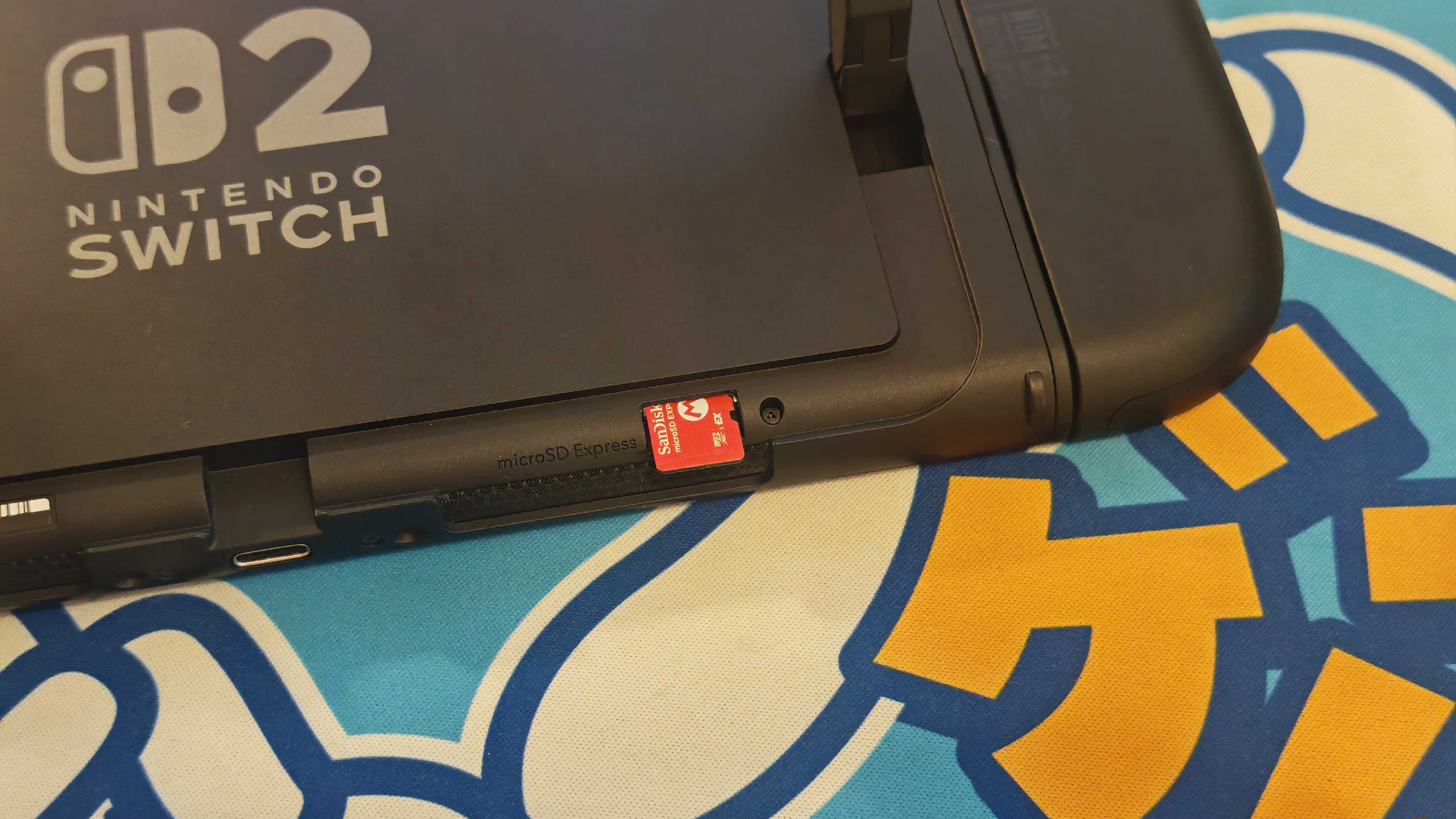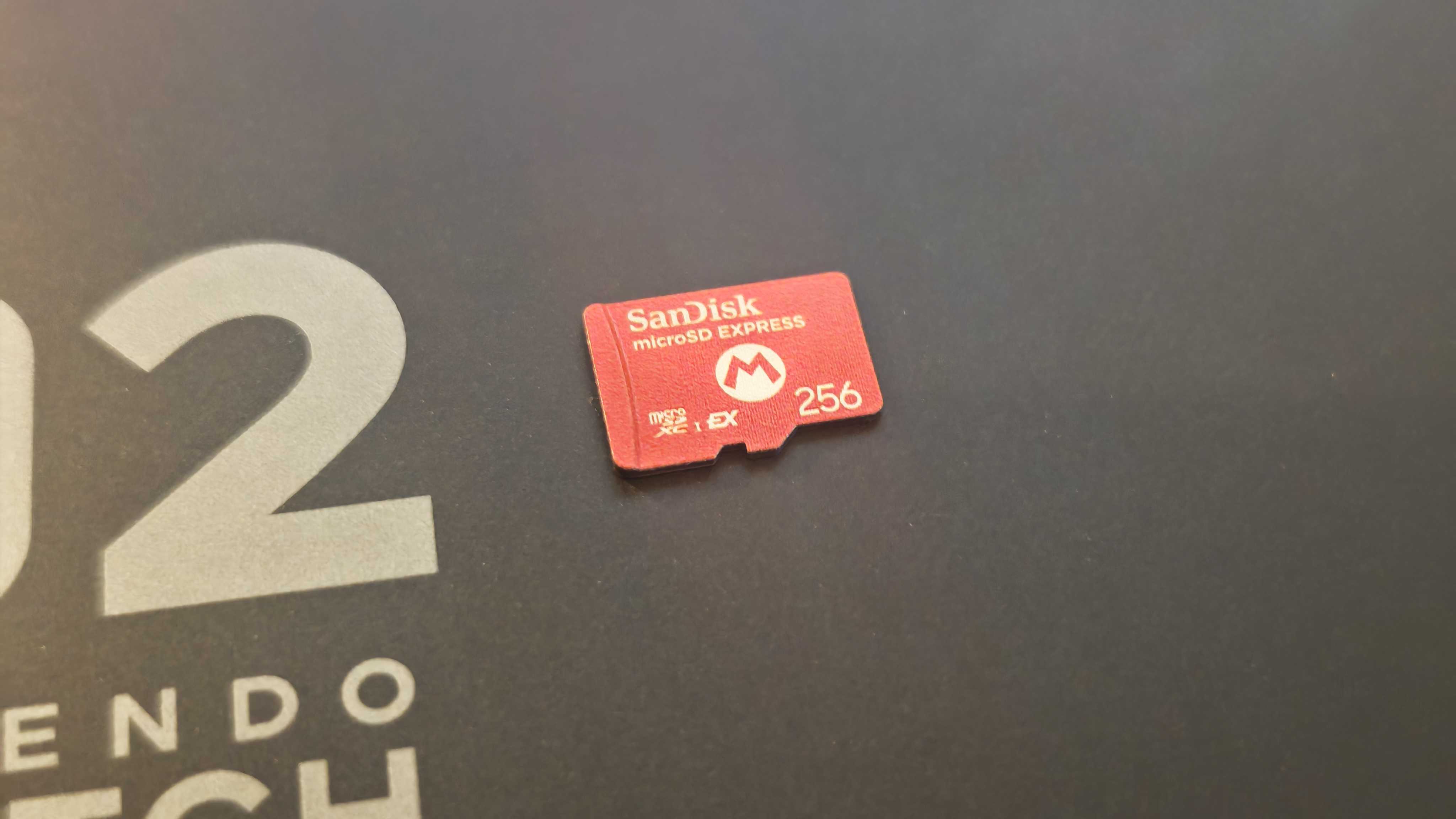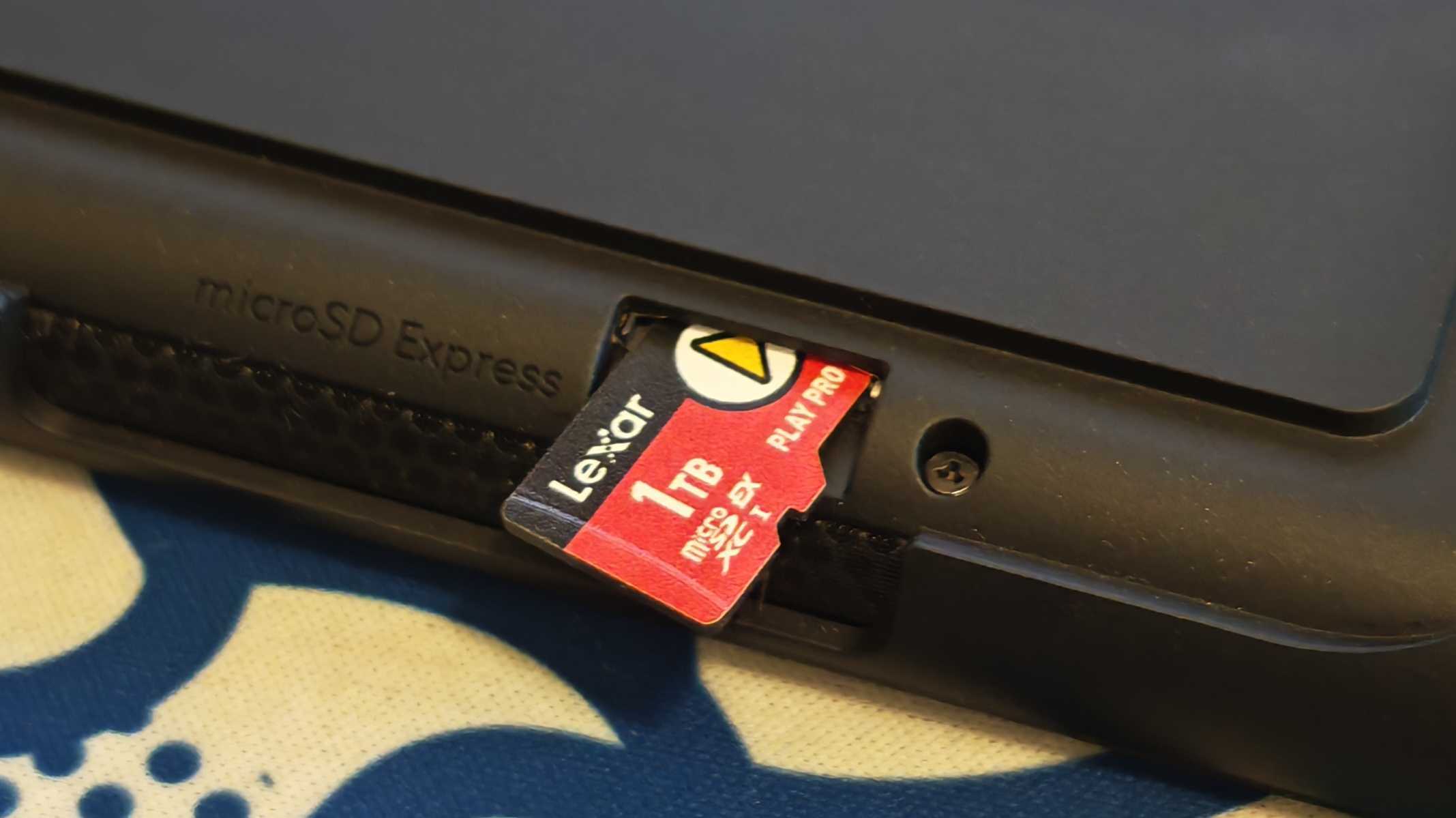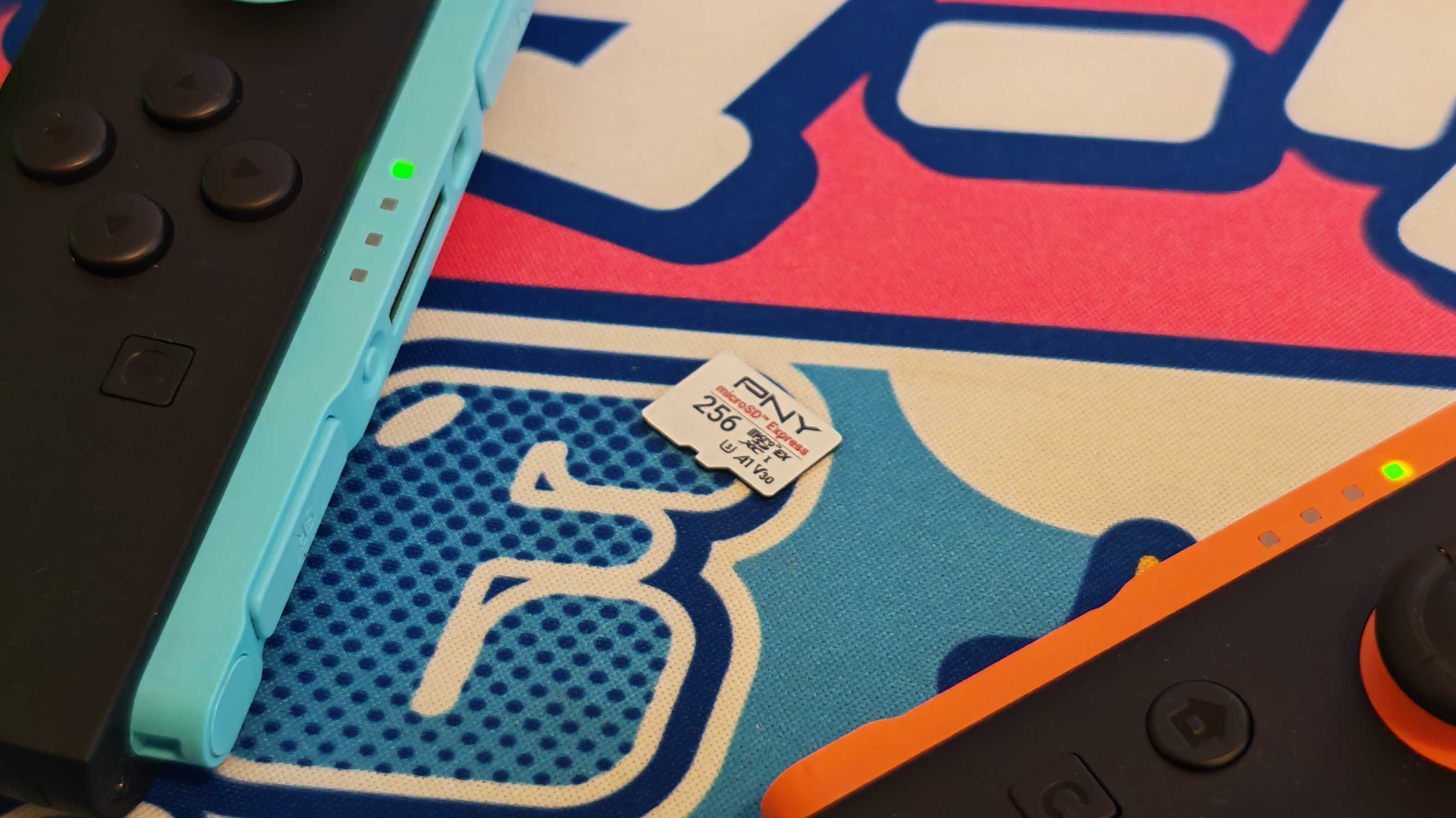Feeling the Nintendo Switch 2 storage space squeeze? These top microSD Express cards are Black Friday must-haves
Upgrade your Switch 2 this Black Friday

The Nintendo Switch 2 has been out for a few months now, so plenty of players are starting to feel the storage squeeze.
The console ships with just over 230GB of usable space, which really doesn’t go very far considering the large size of a lot of games. Cyberpunk 2077: Ultimate Edition, for example, takes up just over 60GB with Hitman World of Assassination – Signature Edition filling up an equally massive 53 or so GB.
Even if you’re sticking to smaller titles, it’s only a matter of time until you start struggling to get new ones installed without having to delete your existing games. Luckily, upgrading your storage space is quick and easy thanks to microSD Express cards. Simply slot one into the port on the back of your console, and you can instantly access hundreds more gigabytes of space.
But which ones should you buy? I’ve been testing a range of options from top manufacturers since the Nintendo Switch 2 debuted and have these three recommendations so far. With the Black Friday sales around the corner they’re likely to receive some decent discounts too, so keep them firmly on your radar.
1. Keep it simple with the official option from SanDisk

The officially licensed SanDisk microSD Express Card for Nintendo Switch 2 is the way to go if you want an official and easy storage upgrade. It’s endorsed by Nintendo, so you don’t need to worry about any kind of compatibility issues when it comes to popping it into your system. It also impressed in my benchmark testing, achieving an excellent average read speed of 894.4MB/s and a strong average write of 674.1MB/s.
What does this mean in real terms? Well, you don’t have to worry about the card slowing down your system. Every game that I’ve played with it so far has run superbly, with no noticeable slowdown on loading screens or in particularly large environments.
Competitor Samsung has its own officially licensed microSD Express Card too, which might be a tempting alternative, but I’d really recommend you stick with SanDisk. The SanDisk version consistently outperformed the Samsung in my testing, with that latter card only managing to reach a pitiful 238.5MB/s write speed.
The SanDisk microSD Express Card for Nintendo Switch 2 comes in a cute Super Mario-inspired design and is very reasonably priced at $59.99 / £49.99 / AU$79.95 - so you’re not even really paying more for the branding.
The only major downside is that it just comes in one storage capacity: 256GB. This is going to be the sweet spot for most users, but if you need more I’d recommend you pick up the next item on this list instead.
2. Get the ultimate capacity boost with Lexar

Chinese storage brand Lexar brought us the very first 1TB MicroSD Express card all the way back in April, weeks before the Nintendo Switch 2 had even hit shelves, and it’s a serious winner.
The Lexar Play Pro microSD Express Card delivered fantastic read speeds in my benchmarking, hitting 831.97MB/s (though you should bear in mind that I tested the 1TB model, which makes direct comparisons with the other cards here a little tricky). Sadly, it doesn’t have the fastest read speed around; it clocked in at just 310.03MB/s with my testing setup, but it’s still comfortably faster than the Samsung offering.
Games run flawlessly, though, and unless you’re literally sitting around transferring games around on the Nintendo Switch 2 file management system all day, you really won’t notice any difference compared to the SanDisk microSD Express Card for Nintendo Switch 2.
Having a 1TB card comes with some serious advantages, too. Since popping it in my personal Nintendo Switch 2, I’ve literally never had to think about storage space again. I can download game after game without fear of filling it up, which is a pretty liberating feeling. I’m sure I’ll manage to clog it up with downloads eventually, but it’s going to take a lot longer than with a 256GB model. Retailing at $199.99 / £199.99 it’s not cheap, but it’s currently one of your few options if you’re after something of that size.
If you’re not willing to spend that much, you can find the 512GB variant for around £100 / $100 / AU$190, or pick up 256GB for $58.98 / £59.45 / AU$119.34.
Lexar is no stranger to massive sales, either, and out of all the models on this list this is the one I think will have the most compelling Black Friday discounts - the 1TB model has already seen savings of over $50 in the US during the latest Amazon sale.
3. PNY delivers premium performance

If pure performance is your number one concern, the PNY microSD Express card should be at the top of your wishlist. It delivered the fastest speeds in my benchmarking, roughly tied with the SanDisk MicroSD Express when it comes to read speeds, but beating it by a solid margin with 713.42MB/s write.
The 256GB model goes for $59.99 / £59.99 / around AU$100, the same price as the SanDisk option too, so it’s a no-brainer if you don’t mind swerving the official license.
There’s also a 512GB version, though the PNY microSD Express card is notable for being the only option here that comes in a smaller 128GB capacity.
This regularly goes for under $40 / £40 when it’s on sale, and while I would personally really struggle with such a modest storage boost, those with smaller libraries might appreciate the opportunity to save some cash and avoid purchasing more storage than they actually need.
Wondering what kind of games to install on your shiny new microSD Express card? Check out our top recommendations below.

➡️ Read our full guide to the best Nintendo Switch 2 games
1. Best overall:
Donkey Kong Bananza
2. Great for multiplayer:
Mario Kart World
3. A sequel for the ages:
Hollow Knight: Silksong
4. A timeless adventure and remake:
The Legend of Zelda: Tears of the Kingdom - Nintendo Switch 2 Edition
5. Best Pokémon:
Pokémon Legends Z-A
Sign up for breaking news, reviews, opinion, top tech deals, and more.

Dash is an experienced tech journalist who currently serves as the Gaming Editor at TechRadar, where he helps oversee coverage of video games and related products.
Before joining the team, he was Contributing Writer at PLAY (formerly Official PlayStation Magazine) and has also written articles for many of the UK's biggest gaming magazines including Edge, PC Gamer, and SFX.
Now, when he's not getting his greasy little mitts on the newest hardware or gaming gadget, he can be found listening to J-pop or feverishly devouring the latest Nintendo Switch otome.
You must confirm your public display name before commenting
Please logout and then login again, you will then be prompted to enter your display name.